|
|
Computer use in utility meter systems remote control
Rugged tablet computers play an important role in remote reading and management of increasingly sophisticated electricity, gas, water and heat meters, benefitting both utilities and customers via more information, higher accuracy, and better service.
Energy plays an absolutely central role in modern civilization. We take for granted that our homes have electricity to provide light, heat, cooling, refrigeration, and to power our computers, TVs, tools and gadgets. A large percentage of homes have gas as well, for cooking hot water or heating. Clean running water is also taken for granted, for drinking, cooking, bathing in the house, and filling pools or watering lawns and yards. Collectively, we call those essential services simply "utilities." We take utilities for granted and consider them as parts of our homes (or businesses). Utilities, of course, are not free. Electricity must be generated, gas refined and piped, water cleaned before it reaches our homes. In this article we discuss the opportunities of using rugged Tablet PCs as remote controllers for increasingly powerful utility meter systems.

Given the importance of utilities in our lives, it's amazing how little we know about them. Most of us pay get billed monthly for the electricity, gas and water we use, yet few people know how much they actually use, or how the use of utilities is even measured. While most people know the cost of gasoline, how much goes into the tank of their car, and how much gas the car uses, few know how much electricity, gas or water they use in their homes or businesses. For most, utilities means just another pesky set of bills.
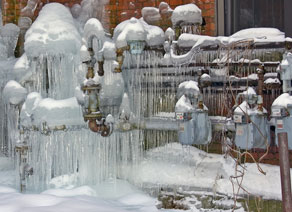 The companies whose business it is to deliver electricity, gas and water -- utilities -- to our homes and businesses, on the other hand, do need to know precisely how much each customer uses in order to generate and secure revenue, manage resources and maintain a good relationship with end-users. That has been done for decades with electricity, gas and water "meters" installed where each utility enters a building. And for decades, utilities would then send out meter readers who diligently recorded usage on paper forms. The companies whose business it is to deliver electricity, gas and water -- utilities -- to our homes and businesses, on the other hand, do need to know precisely how much each customer uses in order to generate and secure revenue, manage resources and maintain a good relationship with end-users. That has been done for decades with electricity, gas and water "meters" installed where each utility enters a building. And for decades, utilities would then send out meter readers who diligently recorded usage on paper forms.
While manual meter reading still exists today, it is labor-intensive, error-prone, and not well suited to handle the increasing demand for complex and unique purpose metering including tiered and special use tariffs, and extended monitoring. So all too often, utilities face growing internal and customers demands for more, more timely, and more accurate data under often difficult conditions.
What this means is that simple utility meters are increasingly replaced by more complex models capable of providing more and better usage data to the benefit of both utility providers and their customers. While most meters still have conventional readouts and displays, reading itself may be electronic via serial, IR or other ports, or the data may be transmitted via WiFi, phone lines, or even power lines. What is available and how does it work?
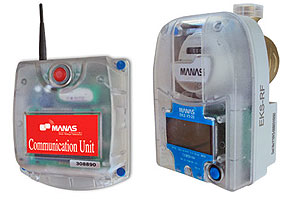 For electricity, there are standard polyphase timetable single-phase and three phase electronic meters, but also prepaying Smart Card meters and X5 meters. There are communication units for remote meter reading as well as settings and configuration. There are remotely managed smart meters with comprehensive reading options, there are automated meter reading (AMR) systems, and there are advanced metering infrastructure (AMI) systems. All these are geared towards fast and accurate and readings, superior customer service, and value-added functionality such as energy audits and customer online interactive customer reports. And all are available both for residential as well as for business and industrial customers. (Shown on the right: Manas Communication Unit and ECM RF meter) For electricity, there are standard polyphase timetable single-phase and three phase electronic meters, but also prepaying Smart Card meters and X5 meters. There are communication units for remote meter reading as well as settings and configuration. There are remotely managed smart meters with comprehensive reading options, there are automated meter reading (AMR) systems, and there are advanced metering infrastructure (AMI) systems. All these are geared towards fast and accurate and readings, superior customer service, and value-added functionality such as energy audits and customer online interactive customer reports. And all are available both for residential as well as for business and industrial customers. (Shown on the right: Manas Communication Unit and ECM RF meter)
For gas the measuring technologies are different as it involves volume instead of current, and there are additional issues such as temperature, pressure and heating value. There are turbine, orifice, ultrasonic, rotary and coriolis meters, as well as regulators to ascertain steady flow rates, but other than that, the issues are the same: accurate readings, elimination of errors, improved customer reporting, and remote management.
Water, finally, employs displacement and velocity measurement technologies scaled for residential and industrial users. Here, too, utilities increasingly employ tiered tariff systems, prepayment systems, and wireless communication systems using NFC (Near Field Communication), Smart Cards, various RF technologies, and remote reading.
Criteria for computer-based remote meter reading and control
While commodity consumer electronics such as smartphones, tablets and notebooks are less expensive than ever, they are mostly unsuitable for work on the road and in vehicles where reliability, connectivity and durability matter. Ruggedized computing equipment must pass a series of stringent environmental and stress testing, as well as achieve an Ingress Protection rating. The Ingress Protection rating, or IP, is defined and described in the IEC (International Electrotechnical Commission) 60529 international standard. It classifies how well electrical enclosures are protected against intrusion of solid objects, dust, and water. When used to rate the degree and effectiveness of sealing of a ruggedized computers (be it a handheld, a notebook or a tablet), the IP rating indicates how well a housing keeps out water, solids and dust.
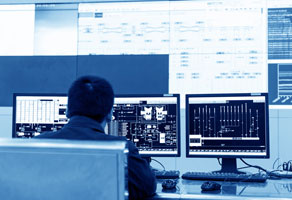 Connectivity and communication requirements are different for computing equipment used on the road, such as communicating with a wide variety of utility meter gear and backend equipment. While the latest processors and communications standards are selling points for consumer products, what matters on the job is the ability to connect to and interface with anything from legacy systems and standards such as RS232 serial; to mainstream interface technologies like LAN, USB, GSM voice and data; data capture such as 1D/2D scanning, Smart Card, and RFID; and all the way to the latest technologies such as 3, 3.5 and 4G mobile broadband to securely communicate with backend servers and control systems. Connectivity and communication requirements are different for computing equipment used on the road, such as communicating with a wide variety of utility meter gear and backend equipment. While the latest processors and communications standards are selling points for consumer products, what matters on the job is the ability to connect to and interface with anything from legacy systems and standards such as RS232 serial; to mainstream interface technologies like LAN, USB, GSM voice and data; data capture such as 1D/2D scanning, Smart Card, and RFID; and all the way to the latest technologies such as 3, 3.5 and 4G mobile broadband to securely communicate with backend servers and control systems.
On the computing side, it's reliable, trouble- and maintenance-free operation that matters. Complexity is the enemy, as are complex cooling systems that can break down, technologies that only work under perfect conditions, short product lifecycles, and power-hungry modules. Simplicity is key.
What's needed is gear that is tough enough to survive falls when it is carried around, protected enough to get rained on, but not overbuilt so that it becomes too large and heavy. Equipment that's advanced and powerful enough to run full Microsoft Windows, but without unneeded speed, heat generation and power consumption. Equipment that is flexible and configurable enough to support whatever it needs to work and communicate with, and equipment that is standard enough not to cost a fortune.
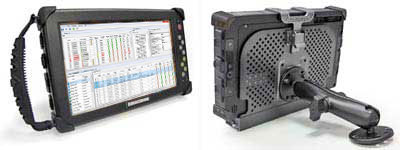 Rugged tablet computers such as the Samwell RUGGEDBOOK SR820 fill all those requirements. It provides full Windows functionality and performance in a hardened, fanless compact form factor that works equally well in utility trucks, in the field, or in the office. Measuring just 10.1 x 6.2 x 1.5 inches (256 x 157 x 38 mm) and weighing under three pounds (1.35 kg), the SR820 is smaller and lighter than full-size rugged tablets without requiring many compromises. There is good wired connectivity on board, all the connectors are standard size, and there is a wealth of wireless functionality (including available GPS and 3.75G radio) and also an integrated camera, optional laser scanner and optional RFID reader. The device can easily be carried and just as easily mounted virtually anywhere in via standard VESA mounts (shown with RAM-Mount ball-and-socket mounting system). Rugged tablet computers such as the Samwell RUGGEDBOOK SR820 fill all those requirements. It provides full Windows functionality and performance in a hardened, fanless compact form factor that works equally well in utility trucks, in the field, or in the office. Measuring just 10.1 x 6.2 x 1.5 inches (256 x 157 x 38 mm) and weighing under three pounds (1.35 kg), the SR820 is smaller and lighter than full-size rugged tablets without requiring many compromises. There is good wired connectivity on board, all the connectors are standard size, and there is a wealth of wireless functionality (including available GPS and 3.75G radio) and also an integrated camera, optional laser scanner and optional RFID reader. The device can easily be carried and just as easily mounted virtually anywhere in via standard VESA mounts (shown with RAM-Mount ball-and-socket mounting system).
Important for use in route and remote reading/management deployments, the SR820's lack of a fan means superior sealing to keep out dust and other harmful particles. The device is easily cleaned and can also handle the wide range of operating temperatures encountered on the road. Compared to standard desktops and laptops, rugged tablet computers such as the Samwell RUGGEDBOOK SR820 can provide more reliable operation, less downtime, and lower total cost of ownership.
Relevant Information:
Samwell Group RUGGEDBOOK SR820 page
Manas Energy Management, Ankara, Turkey
Rugged computing terminology and standards
Samwell at Computex Taipei, June 4-8, 2013: TWTC Nangang Upper Level L1302
To learn more about the ruggedized Samwell SR820 tablet computer and its many applications, email RUGGEDBOOK at info@ruggedbook.com.tw. And check RuggedPCReview.com's full analysis of the SR820.
RUGGEDBOOK Headquarters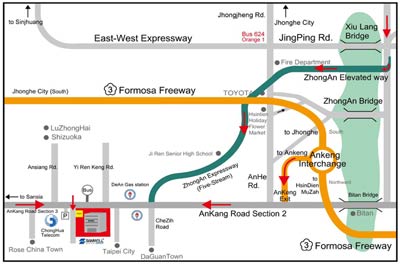
Samwell Building
317-1, Sec. 2,
AnKang Rd., Xindian Dist.
New Taipei City 23153, Taiwan (R.O.C.)
Telephone: 886-2-2214-1133
Fax: 886-2-2215-5458
Web: www.ruggedbook.com.tw
info@ruggedbook.com.tw
|






 The companies whose business it is to deliver electricity, gas and water -- utilities -- to our homes and businesses, on the other hand, do need to know precisely how much each customer uses in order to generate and secure revenue, manage resources and maintain a good relationship with end-users. That has been done for decades with electricity, gas and water "meters" installed where each utility enters a building. And for decades, utilities would then send out meter readers who diligently recorded usage on paper forms.
The companies whose business it is to deliver electricity, gas and water -- utilities -- to our homes and businesses, on the other hand, do need to know precisely how much each customer uses in order to generate and secure revenue, manage resources and maintain a good relationship with end-users. That has been done for decades with electricity, gas and water "meters" installed where each utility enters a building. And for decades, utilities would then send out meter readers who diligently recorded usage on paper forms.
 For electricity, there are standard polyphase timetable single-phase and three phase electronic meters, but also prepaying Smart Card meters and X5 meters. There are communication units for remote meter reading as well as settings and configuration. There are remotely managed smart meters with comprehensive reading options, there are automated meter reading (AMR) systems, and there are advanced metering infrastructure (AMI) systems. All these are geared towards fast and accurate and readings, superior customer service, and value-added functionality such as energy audits and customer online interactive customer reports. And all are available both for residential as well as for business and industrial customers. (Shown on the right: Manas Communication Unit and ECM RF meter)
For electricity, there are standard polyphase timetable single-phase and three phase electronic meters, but also prepaying Smart Card meters and X5 meters. There are communication units for remote meter reading as well as settings and configuration. There are remotely managed smart meters with comprehensive reading options, there are automated meter reading (AMR) systems, and there are advanced metering infrastructure (AMI) systems. All these are geared towards fast and accurate and readings, superior customer service, and value-added functionality such as energy audits and customer online interactive customer reports. And all are available both for residential as well as for business and industrial customers. (Shown on the right: Manas Communication Unit and ECM RF meter)
 Connectivity and communication requirements are different for computing equipment used on the road, such as communicating with a wide variety of utility meter gear and backend equipment. While the latest processors and communications standards are selling points for consumer products, what matters on the job is the ability to connect to and interface with anything from legacy systems and standards such as RS232 serial; to mainstream interface technologies like LAN, USB, GSM voice and data; data capture such as 1D/2D scanning, Smart Card, and RFID; and all the way to the latest technologies such as 3, 3.5 and 4G mobile broadband to securely communicate with backend servers and control systems.
Connectivity and communication requirements are different for computing equipment used on the road, such as communicating with a wide variety of utility meter gear and backend equipment. While the latest processors and communications standards are selling points for consumer products, what matters on the job is the ability to connect to and interface with anything from legacy systems and standards such as RS232 serial; to mainstream interface technologies like LAN, USB, GSM voice and data; data capture such as 1D/2D scanning, Smart Card, and RFID; and all the way to the latest technologies such as 3, 3.5 and 4G mobile broadband to securely communicate with backend servers and control systems.
 Rugged tablet computers such as the Samwell RUGGEDBOOK SR820 fill all those requirements. It provides full Windows functionality and performance in a hardened, fanless compact form factor that works equally well in utility trucks, in the field, or in the office. Measuring just 10.1 x 6.2 x 1.5 inches (256 x 157 x 38 mm) and weighing under three pounds (1.35 kg), the SR820 is smaller and lighter than full-size rugged tablets without requiring many compromises. There is good wired connectivity on board, all the connectors are standard size, and there is a wealth of wireless functionality (including available GPS and 3.75G radio) and also an integrated camera, optional laser scanner and optional RFID reader. The device can easily be carried and just as easily mounted virtually anywhere in via standard VESA mounts (shown with
Rugged tablet computers such as the Samwell RUGGEDBOOK SR820 fill all those requirements. It provides full Windows functionality and performance in a hardened, fanless compact form factor that works equally well in utility trucks, in the field, or in the office. Measuring just 10.1 x 6.2 x 1.5 inches (256 x 157 x 38 mm) and weighing under three pounds (1.35 kg), the SR820 is smaller and lighter than full-size rugged tablets without requiring many compromises. There is good wired connectivity on board, all the connectors are standard size, and there is a wealth of wireless functionality (including available GPS and 3.75G radio) and also an integrated camera, optional laser scanner and optional RFID reader. The device can easily be carried and just as easily mounted virtually anywhere in via standard VESA mounts (shown with 